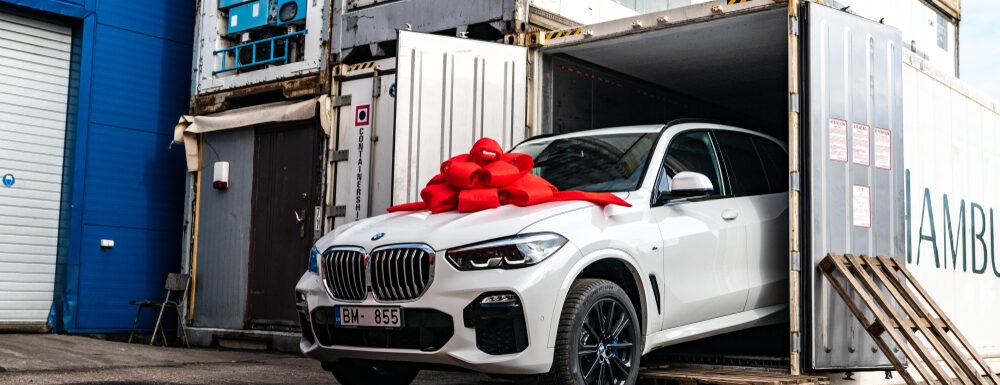
How To Temporarily Import Or Export Your Car
If you wish to take your beloved vehicle over the Canadian-United States border, this blog is perfect for you. The ins and outs of importing and exporting vehicles can get complicated and confusing, not to mention it is often full of legal jargon that can cause anyone’s head to spin!
We will strive to answer all of your questions on this topic in a non-complicated and succinct method.
Temporarily Importing Vehicle from the United States To Canada
There are plenty of borders scattered across Canada and the United States that make it very simple to drive across the border and voila! You’re in a new country. Sounds easy enough right? Well, let’s not get too ahead of ourselves.
Firstly, you will need to provide the border agent with the proper identification. For tourist visits to Canada of less than 180 days, U.S. citizens do not need visas. However, Canadian law demands that all people entering the country Canada provide proof of citizenship and identity, such as a valid U.S. passport, passport card, or NEXUS card will work for U.S. citizens.
Since entering Canada is considered international travel, there are extra steps and preparation to take if you wish to bring your car with you.
How long you are entering the country matters. If you are entering Canada for a brief vacation that will last less than six months, 180 days, your vehicle must be shipped in bond. This means that your car is taken to a Canada Border Services Agency authorized facility where you, as the owner, have to process the vehicle with self-clearance, with no need to pay any duties or taxes as the vehicle is considered temporary. You are considered a visitor in the country and have free reign to enjoy the landscape, roads, different weather, and food at your will–so long as the vehicle is being used for your own personal use, you’ll have zero issues.
Should you cross the border with a work or student visa, you are still considered a short-term visitor and there is no additional paperwork needed nor the need to declare your vehicle.
As a tourist with your car, you cannot sell or dispose of your car, or overstay your visa. Any of these actions can result in trouble.
Things change however if you are planning on spending significant time in Canada and your visit will exceed three months. In this instance, it’s best practice to register your vehicle using a Vehicle Import Form (form 1). The form should be complete in total to have your vehicle licensed in Canada. It is recommended that you use a customs broker to handle this paper on your behalf to avoid any setbacks. The form needs to know the specific details of the car, so be sure to acquire any paperwork you may need.
Each province in Canada does have different laws when it comes to registering vehicles. It’s important to know what the laws are or your car could be rejected, including for example, some provinces won’t license right-hand drive vehicles or salvaged vehicles with repairs.
If you planning to import a vehicle from the U.S. to Canada, it is important to note the following information:
- You may have to report to U.S. Customs for clearance to export the vehicle.
- You will need to pay taxes and/or duties when applicable to bring your vehicle through Canadian customs.
- Your vehicle must be clear of any recalls and pass an inspection by the Registrar of Imported Vehicles (RIV) in Canada before it can be officially considered imported. This must be done within 45 days or one year in the case of a salvage vehicle. If a vehicle fails this, it cannot stay in Canada.
- A vehicle modified from its original state will not qualify to be imported into Canada. This also applies to Canadian-owned vehicles modified in the U.S. or Mexico which return to Canada. This includes a van converted to a motorhome or a motorcycle converted to a motor tricycle (“trike”).
Why Bring Your Vehicle To Canada?

Canada is home to some stunning landscapes, from sea to sky and mountains. Each province offers something completely different, so there is truly something for everyone.
Canada is also very vast and requires a car to reach many destinations if you plan to spend any time outside of the city hubs. As such, you will need a car! The cost of rentals has recently skyrocketed, making it unattainable and unrealistic for a short visit to the country. It is definitely more economical to bring your car with you so that you can enjoy the country at your own pace.
Temporarily Importing Vehicle from Canada to the United States
Stick it in reverse—let’s discuss what is involved with temporarily importing your vehicle from Canada to the United States.
A Canadian resident is permitted to import a vehicle without having to pay taxes strictly for personal use for up to one year. The vehicle must be exported out of the U.S. within one year and it’s not permitted to be sold in the U.S. If this is not followed, the vehicle can be seized for non-payment of duty, so if you do decide to keep your car there permanently, it’s important to complete the permanent import process before the permitted year ends. If not there may be penalties incurred by Canada Border Services Agency or U.S. Customs and Border Protection respectively.
Only specific vehicles are allowed to be imported. For example, any vehicle that is twenty-five years old or more can be imported to the United States from Canada without any special modifications. Vehicles under twenty-five years old must be modified to meet federal motor vehicle safety standards, known as “federalization,” and depending on the vehicle itself will vary. It is not always complicated though and can be as simple as adding “mph” stickers to the speedometer. The National Highway Traffic Safety Administration (NHTSA) offers a list of vehicles eligible for import from Canada.
There is much-required paperwork that must be completed to safely and successfully import your vehicle into the U.S. You will need to provide the following:
- Bill of Sale showing the VIN with your name as the purchaser or seller’s signature, as well as the purchase price and currency of the sale.
- Valid Passport
- Manufacturer’s Statement, letter of compliance or the title and registration.
- Ensure the vehicle is thoroughly cleaned before heading to the border. The U.S. The Department of Agriculture requires that the undercarriage be completely free of any foreign soil.
- EPA approval letter.
Like when used in Canada, the vehicle must be used for personal use only while in the U.S.
Ship Your Vehicle Instead

Did reading this give you a slight headache!? If yes, no judgment on our end! It is indeed a complicated landscape, not to mention it is ever-changing.
Dealing with the ins and outs of bringing your car over to the border can be completely taken off your to-do list when you enlist the help of the experts: ShipLux! We are here to help you navigate the bureaucracy involved in shipping while making life easier and straightforward for you. Our expertly skilled team will sort out the best method of getting your vehicle to and from each country with ease, in a realistic time frame. We will help guide you on the paperwork required too, but that always is your responsibility!
We offer both enclosed trailers and open carrier trailers for getting your car across the border. Enclosed trailers are what we recommend to anyone shipping expensive, rare or simply very special vehicles, as it offers 360-degree protection of your vehicle, shielding it safely from the weather elements. Open carriers are better for the budget and are just as premium when you work with ShipLux, with the major difference being the trailer the vehicle sits on is open. This mostly means you will just need to arrange for a car wash when it reaches the final destination! Both are terrific options and your car will be handled with care and appreciation.
What’s more, our 24/7 customer support team will be there every step of the way for the temporary import/export process. Our team will speak to you via WhatsApp, Facebook, Phone Calls or text message, whatever you prefer, to offer you updates and to answer any questions.
Keen to get started on the process of taking your vehicle across the border? The first step is to complete our simple-to-follow quote on our website, where you will be provided with an accurate, transparent quote that details all of the costs that are included in your price. Trust our team to take care of the paperwork and get your car and you safely across the border and back!
Recent post

General Shipping Information
Debunking Common Vehicle Transport ...

Car Shipping